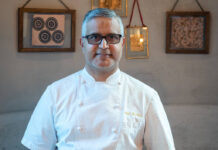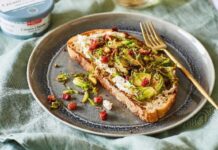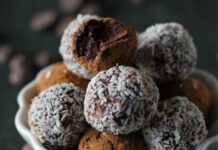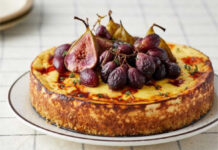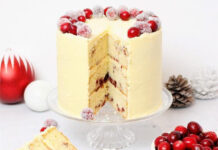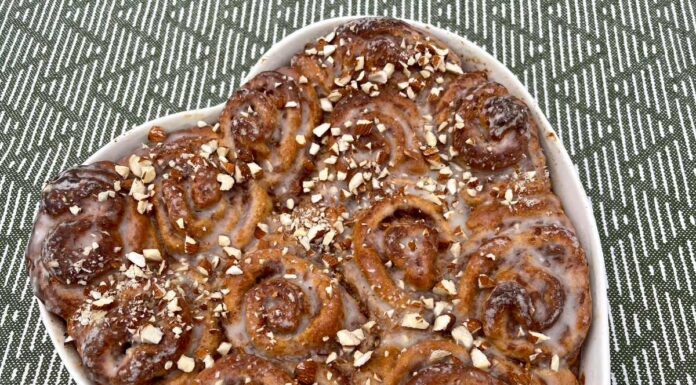What if we told you there’s a fizzy drink that can give you a major energy boost, but it doesn’t involve a can containing astronomical amounts of sugar or caffeine – in fact, it’s highly nutritious, and can be made at home?
Rachel De Thample says she experienced a “massive wave of energy” when she started drinking kefir, a fermented dairy drink, on a daily basis. It was not long after giving birth to her son, when she’d started to feel “wiped out” all the time.
“That’s quite common for new parents, but I just felt like there was something else going on. I was feeling pretty horrid and I went to see a nutritionist and she did some gut testing and found I had no good bacteria in my gut,” the food writer says.
Blaming a poor diet growing up in the US, combined with “a lot of antibiotics” she’d taken as a child, De Thample cut out sugary and starchy foods and embarked on “a pretty pure diet, mostly fruits and veg and nuts and a few lean meats and fish.
“Then after I did that for about six weeks, I started to introduce loads of fermented foods to repopulate the good bacteria – the one I first started with was goat’s milk kefir from Wales,” she recalls.
After enjoying the energy “rushing back”, Texas-born De Thample decided to have a go at making her own kefir, which is how her obsession with all things fermented began.
“I did and I just thought, ‘Well that’s easy’. That really opened the culinary door. Once I started making my own, I realised how much fun it is and how many flavour combos you could start playing with.”
Now, the 44-year-old, who started out as a TV news journalist before moving to the UK and making the switch to food writing and training as a chef, has penned River Cottage Handbook No.18: Fermentation, imparting all the knowledge she’s garnered throughout the years.
So what exactly is fermentation? “Basically, you’re creating an environment where good bacteria can multiply,” De Thample explains. She’s keen to stress that you don’t need to get bogged down in the science if you want to create tasty fermented foods like pickles, sauerkraut and sourdough bread, or drinks like kefir and kombucha.
“I try to explain enough of the basic science in the book, without being too off-putting, because it put me off initially. I just thought, I need, like, a degree and I need a sterilised kitchen and I need special tools – then I realised that all I needed was a jam jar, a pinch of salt and cabbage to make sauerkraut.”
She says sauerkraut is the “easiest and the best” recipe for beginners, and the most versatile in terms of how you use it – in everything from lentil salad and potato cakes to Bloody Marys.
To create fermented drinks, you will need some extra ingredients. Kefir grains are what start the fermentation process, whether it’s in water, milk or a non-dairy drink, while a ‘scoby’ (which stands for ‘symbiotic culture of bacteria and yeast’) gets things going while brewing black tea-based kombucha.
“You can easily order a scoby or kefir grains online, but one thing I always encourage people to do is to use their social media networks,” De Thample says. “Most of the time, they’ll know someone who has a kombucha scoby on the go, or some kefir grains.”
The other key ingredient you’ll need? Patience. Kefir requires at least 24 hours inside a sealed jar before it’s ready to drink, while most kraut and pickle recipes take about a week to ferment, and you’ll need to ‘feed’ a sourdough starter of flour and water for seven days before it can be used.
Preparation is generally quick and easy though, so if you’re willing to wait you’ll reap rewards because fermentation “enhances the flavour quite dramatically – it’s a double win in terms of the health benefits and the flavour as well”, says De Thample.
It’s not just your energy levels that might rise when you consume tangy krauts or fizzy fermented drinks.
“With things like pickles and sauerkraut, the vitamin C content almost doubles throughout the fermentation process, and the vitamin A content increases,” De Thample adds. “Also you have that boost of good gut bacteria, so you’re certainly increasing the biodiversity of your gut as well, so that does help digestion.”
She recommends starting with one portion of fermented food a day – and be aware that eating a lot of sugar can have the opposite effective, destroying the good bacteria in your gut.
“I think in general, it’s good to be mindful of sugar. If you’re having kefir, for example, for breakfast, if you have it with a croissant laden with jam then you’re kind of negating the benefits.”
One sweet treat you will find in the book is deep-fried ‘sourdoughnuts’, with chocolate glaze, icing or jam filling.
“I talked to Hugh [Fearnley-Whittingstall, owner of River Cottage, who introduces the book] about it. I just said, ‘Is it OK because they’re quite fun but it’s a bit naughty and most of the recipes are really healthy’ – but to be honest, we all like sugar.”
De Thample is a fan of following an ’80/20′ approach to healthy eating, where 80% of the food you eat is “really nutrient dense, and then the 20% is the stuff that just gives you pleasure and joy and helps you be a sociable, happy being.
“You know, you don’t want to be sitting on your own consuming fermented foods and nothing else,” she says. “It’s all about the balance.”
River Cottage Handbook No.18: Fermentation by Rachel de Thample, photography by Gavin Kingcome, is published by Bloomsbury Publishing (rivercottage.net).
You may also be interested in…
This article may include affiliate links to products and services where we may receive a small fee to support the running of this site if you make a purchase or is a sponsored article from one of our select editorial partners providing valuable advice and information to our readers.



























































